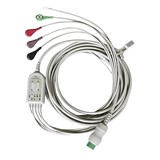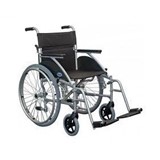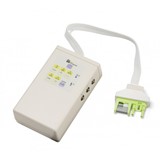Electrocardiography (ECG) machines are critical medical devices used for diagnosing and monitoring cardiac conditions. To ensure accurate and reliable ECG readings, regular maintenance and calibration of these machines are essential. In this article, we will explore the importance of maintenance and calibration, the recommended procedures, and the benefits they offer in delivering optimal patient care.
Importance of Maintenance
Regular maintenance of ECG machines is crucial to keep them in optimal working condition. Over time, wear and tear, as well as dust and debris accumulation, can affect the performance of the equipment. Proper maintenance ensures that the machine functions accurately, delivering precise ECG recordings that healthcare professionals can trust for accurate diagnosis and treatment decisions.


Find the right ECG Machine
Compare quotes from expert Australian suppliers and make the best choice. It's free, quick and easy!
Recommended Maintenance Procedures
1. Cleaning and Sanitization
Regular cleaning and sanitization of the ECG machine's external surfaces, electrodes, cables, and leads are essential to prevent the buildup of dirt and germs. Disinfecting the equipment helps reduce the risk of cross-contamination between patients and maintains a hygienic environment in the healthcare facility.
2. Inspection of Cables and Leads
Inspecting ECG cables and leads is necessary to identify any signs of wear or damage. Damaged cables or leads may result in poor signal quality or signal loss during recordings. Regular inspection helps detect issues early, allowing for timely replacements and preventing potential disruptions during patient examinations.
3. Battery Maintenance
For portable or battery-operated ECG machines, routine battery maintenance is essential. Ensuring that batteries are charged and functioning properly helps prevent unexpected power failures during critical procedures and ensures continuous operation.
4. Software Updates
Updating the ECG machine's software is essential to ensure that it is running the latest firmware and features. Software updates often include bug fixes, security enhancements, and improved functionalities, enhancing the overall performance and reliability of the machine.
5. Electrode Gel Replacement
The electrode gel used in ECG recordings can dry out over time, leading to poor signal conductivity. Regularly replacing the electrode gel ensures optimal signal quality and reduces the likelihood of recording artifacts.
Importance of Calibration
Calibration is the process of adjusting the ECG machine's settings to maintain accurate measurements and ensure consistency in readings. Calibration is particularly crucial because slight variations in measurement accuracy can significantly impact the interpretation of ECG waveforms and the accuracy of diagnostic conclusions.
Recommended Calibration Procedures
1. Voltage Calibration
Voltage calibration involves adjusting the ECG machine's voltage settings to ensure that the recorded electrical signals accurately represent the heart's electrical activity. Proper voltage calibration is vital to avoid distortions in the ECG waveform and to provide correct voltage measurements.
2. Time Calibration
Time calibration ensures that the ECG machine accurately records the time intervals between various ECG waveform components. Proper time calibration is crucial for precise heart rate measurements and accurate assessment of ECG intervals, such as the PR interval, QRS complex, and QT interval.
3. Amplitude Calibration
Amplitude calibration ensures that the height of the ECG waveform on the paper or display corresponds accurately to the electrical signal's amplitude. Proper amplitude calibration is vital for correctly interpreting the ECG's voltage measurements and identifying abnormalities.
4. Frequency Calibration
Frequency calibration involves adjusting the ECG machine's filter settings to ensure accurate frequency response. Proper frequency calibration helps eliminate unwanted noise and interference, ensuring clear and reliable ECG recordings.


Find the right ECG Machine
Compare quotes from expert Australian suppliers and make the best choice. It's free, quick and easy!
Benefits of Regular Maintenance and Calibration
1. Reliable Diagnostic Results
Regular maintenance and calibration ensure that the ECG machine provides consistent and accurate diagnostic results. Healthcare professionals can rely on the ECG readings to make informed decisions about patient care and treatment plans.
2. Prolonged Equipment Lifespan
Routine maintenance can extend the lifespan of the ECG machine by preventing premature wear and tear. Proper care and timely replacements of components can prevent major breakdowns and reduce the need for costly repairs.
3. Patient Safety
Regular maintenance and calibration contribute to patient safety by reducing the risk of misdiagnosis due to faulty equipment. Accurate ECG readings facilitate timely intervention and appropriate treatment, enhancing patient outcomes.
4. Compliance with Quality Standards
Maintaining and calibrating ECG machines in line with manufacturer recommendations and industry standards ensures compliance with quality and safety regulations in the healthcare setting.
Cleaning and Disinfection of ECG Machine Components
Proper cleaning and disinfection of Electrocardiography (ECG) machine components are essential to maintain a hygienic environment in healthcare settings and prevent the spread of infections. Regular cleaning of the machine and its accessories ensures accurate and reliable ECG readings, safeguarding both patients and healthcare professionals. In this article, we will explore the recommended practices for cleaning and disinfecting ECG machine components.
1. Preparation
Before starting the cleaning and disinfection process, ensure that the ECG machine is turned off and disconnected from any power sources. Also, remove any electrodes or cables attached to the machine.
2. External Surfaces
Use a soft, lint-free cloth dampened with a mild detergent solution or a hospital-grade disinfectant to clean the external surfaces of the ECG machine. Pay special attention to areas frequently touched, such as control buttons, display screens, and handles. Avoid excessive moisture on electronic components.
3. Cables and Leads
Wipe down ECG cables and leads using a cloth dampened with the same mild detergent solution or disinfectant. Gently clean the connectors and avoid submerging them in liquid to prevent damage to the internal wiring.
4. Electrodes
If the ECG machine uses reusable electrodes, detach them from the cables and clean them separately. Soak the electrodes in a cleaning solution recommended by the manufacturer to remove any residual gel or debris. Rinse the electrodes thoroughly with water and let them air-dry before reattaching them to the cables.
5. Display Screens
For touchscreen display screens, follow the manufacturer's cleaning guidelines to avoid damaging the sensitive surface. Use a soft, lint-free cloth slightly dampened with a recommended cleaning solution to wipe the screen gently.
6. Battery Compartment
If the ECG machine uses batteries, ensure that the battery compartment is clean and free of any debris. Wipe the battery contacts with a dry cloth to prevent corrosion.
7. Printer and Paper Tray
If the ECG machine includes a printer, clean the printer's exterior surfaces using the same mild detergent solution or disinfectant. If necessary, refer to the printer's manual for specific cleaning instructions. Keep the paper tray clean and free from dust to ensure smooth printing.
8. Drying and Disposal of Cleaning Materials
After cleaning and disinfection, allow all components to air-dry thoroughly before reassembling the ECG machine. Dispose of any used cleaning materials, such as wipes or cloths, according to the facility's waste disposal protocols.
9. Frequency of Cleaning
The frequency of cleaning and disinfection depends on the usage and patient load. High-touch surfaces, such as control buttons and display screens, may require more frequent cleaning, especially between patient examinations. It is recommended to clean and disinfect the ECG machine at the beginning and end of each day, and after each patient use.
10. Adherence to Manufacturer Guidelines
Always follow the manufacturer's cleaning and disinfection guidelines specific to the ECG machine model. Different machines may have varying requirements, and using the wrong cleaning agents or methods could damage the equipment.
Calibration and Accuracy Verification of ECG Tracings
Calibration and accuracy verification are crucial steps in ensuring the reliability and precision of Electrocardiography (ECG) tracings. Proper calibration ensures that the ECG machine is accurately measuring and representing the electrical activity of the heart, while accuracy verification confirms that the machine's readings align with standardized measurements. In this article, we will delve into the significance of calibration and accuracy verification in ECG tracings and the recommended procedures to achieve optimal results.
Importance of Calibration
Calibration is the process of adjusting the ECG machine to produce accurate and consistent measurements of the heart's electrical signals. Proper calibration establishes a reference point that ensures the voltage and time measurements on the ECG tracings are precise and reliable. Without calibration, ECG tracings may be inaccurate, leading to misinterpretations and potential misdiagnoses.
Calibration Procedure
- Voltage Calibration: Voltage calibration involves adjusting the ECG machine's voltage settings to accurately represent the electrical activity of the heart. This calibration ensures that the height of the ECG waveform corresponds correctly to the electrical signal's amplitude.
- Time Calibration: Time calibration ensures that the ECG machine records the time intervals between various components of the ECG waveform accurately. Proper time calibration is essential for correct heart rate measurements and accurate assessment of ECG intervals, such as the PR interval, QRS complex, and QT interval.
- Amplitude Calibration: Amplitude calibration is crucial for the proper representation of the ECG waveform's voltage measurements. It ensures that the ECG tracings are scaled appropriately, providing an accurate representation of the heart's electrical activity.
- Frequency Calibration: Frequency calibration involves adjusting the ECG machine's filter settings to ensure accurate frequency response. Proper frequency calibration helps eliminate unwanted noise and interference, ensuring clear and reliable ECG tracings.
Importance of Accuracy Verification
Accuracy verification is the process of confirming that the ECG machine's measurements align with established standards and known reference points. It validates the machine's accuracy and reliability, ensuring that the recorded ECG tracings are in accordance with expected values. Accuracy verification is essential for maintaining consistency and quality in ECG recordings.
Accuracy Verification Procedure
- Standard ECG Calibration Signal: Use a standardized ECG calibration signal or a simulator with known signal characteristics to assess the accuracy of the machine. The calibration signal produces a stable and known ECG waveform, which serves as a reference for comparing the machine's measurements.
- Recordings Comparison: Record the ECG calibration signal using the ECG machine and compare the resulting tracings with the expected waveform. Check for any deviations or discrepancies between the machine's readings and the standardized signal.
- Adjustments and Corrections: If discrepancies are found, make the necessary adjustments to the ECG machine's calibration settings. Calibration knobs or settings may need to be fine-tuned to achieve accurate readings.
- Repeat Verification: After making adjustments, repeat the accuracy verification process to ensure that the ECG machine now produces ECG tracings that align with the standardized signal.
Regular Calibration and Verification
Calibration and accuracy verification should be performed regularly to maintain the ECG machine's accuracy and reliability. The frequency of these procedures may vary depending on the machine's usage and manufacturer recommendations. Regular calibration and verification help identify any deviations or inaccuracies in ECG tracings promptly, enabling timely adjustments and minimizing the risk of misdiagnoses.
Replacing ECG Machine Electrodes and Accessories
Electrocardiography (ECG) machine electrodes and accessories are crucial components that directly impact the accuracy and quality of ECG recordings. Regular replacement of electrodes and accessories is essential to maintain optimal performance and ensure reliable cardiac diagnostics. In this article, we will explore the significance of replacing ECG machine electrodes and accessories, the recommended replacement schedule, and best practices for ensuring accurate and dependable ECG readings.
Importance of Replacement
- Signal Quality: ECG electrodes are responsible for capturing the heart's electrical signals from the patient's skin. Over time, electrodes may wear out, lose their adhesiveness, or become contaminated, resulting in poor signal quality. Regular replacement ensures that the electrodes consistently adhere to the skin and provide accurate signal acquisition.
- Hygiene and Infection Control: Proper replacement of electrodes and accessories helps maintain a hygienic environment in healthcare settings. Used electrodes can harbor bacteria and contaminants, increasing the risk of cross-contamination between patients. Regular replacement minimizes the potential spread of infections.
- Patient Comfort: New electrodes and accessories offer better adhesion and improved patient comfort during ECG examinations. Comfortable and secure electrodes reduce the need for repeated placements, which can disrupt the diagnostic process and lead to inconclusive readings.
Recommended Replacement Schedule
The replacement schedule for ECG machine electrodes and accessories may vary based on the type of electrodes used, the manufacturer's recommendations, and the frequency of ECG examinations. However, the following general guidelines can serve as a reference:
- Disposable Electrodes: Disposable electrodes are designed for single-use only. After each ECG examination, dispose of the electrodes properly as per the healthcare facility's waste disposal protocols.
- Reusable Electrodes: Reusable electrodes typically have a finite lifespan and require regular replacement. Depending on the manufacturer's guidelines, replace reusable electrodes after a specified number of uses or when signs of wear or reduced adhesiveness are evident.
- Lead Wires and Cables: Inspect lead wires and cables regularly for signs of wear or damage. Replace any frayed or damaged cables promptly to prevent signal loss and ensure reliable ECG recordings.
- Electrode Gel: Electrode gel is essential for optimizing signal conductivity and ensuring accurate ECG tracings. Replace electrode gel as recommended by the manufacturer or when it dries out and loses its effectiveness.
- Straps and Belts: For ambulatory ECG monitoring or Holter systems, inspect straps and belts regularly for wear and tear. Replace these accessories as needed to ensure proper electrode placement and patient comfort during long-term monitoring.
Best Practices for Replacement
- Follow Manufacturer's Guidelines: Adhere to the manufacturer's recommendations for electrode and accessory replacement. The manufacturer's guidelines provide essential information on the specific lifespan and usage limitations of the components.
- Proper Disposal: Dispose of used electrodes and accessories in accordance with healthcare facility guidelines and waste disposal regulations. Proper disposal helps prevent environmental contamination and potential health hazards.
- Stock Adequately: Ensure an adequate supply of replacement electrodes and accessories is readily available in the healthcare facility. Regularly check the inventory and restock as needed to avoid interruptions during patient examinations.
- Train Staff: Train healthcare staff on the proper techniques for electrode replacement and accessory maintenance. Proper training ensures consistent and standardized procedures for reliable ECG recordings.
Ensuring ECG Machine Safety and Electrical Safety Checks
Electrocardiography (ECG) machines play a critical role in diagnosing and monitoring cardiac conditions, making their safety and proper functioning paramount. Regular electrical safety checks and adherence to safety protocols are essential to prevent accidents, ensure patient safety, and maintain the accuracy of ECG readings. In this article, we will explore the steps to ensure ECG machine safety and the significance of conducting electrical safety checks.
Importance of ECG Machine Safety
ECG machine safety is crucial to protect both patients and healthcare professionals from potential hazards. Ensuring the proper functioning and maintenance of the ECG machine reduces the risk of electrical shock, equipment malfunctions, and transmission of infections. Adhering to safety guidelines creates a safe and conducive environment for cardiac diagnostics and patient care.
Electrical Safety Checks
Conducting regular electrical safety checks is a fundamental aspect of ECG machine maintenance. These checks help identify potential electrical issues and ensure compliance with safety standards. The following steps outline the key components of electrical safety checks:
- Inspect Power Cords and Plugs: Regularly examine the power cords and plugs for any signs of wear, fraying, or damage. Damaged power cords can pose electrical hazards and must be replaced promptly.
- Grounding Integrity: Verify that the ECG machine is properly grounded to prevent electrical shocks. Faulty grounding can lead to electrical instability and compromise patient safety.
- Check Electrical Connections: Inspect all electrical connections, including lead wires and cables, for loose or corroded connections. Securely fasten all connections to maintain stable signal transmission.
- Verify Fuse Integrity: Check the integrity of fuses and circuit breakers in the ECG machine. Replace any blown fuses or tripped circuit breakers with the appropriate replacements to prevent equipment damage.
- Inspect Internal Components: If possible, perform an internal inspection of the ECG machine's components. Look for signs of overheating, discoloration, or burning, which may indicate potential electrical issues.
- Safety Labels and Markings: Ensure that all safety labels and markings on the ECG machine are legible and intact. These labels provide essential information on safety precautions and warnings.
- Test Emergency Shut-off Functionality: Verify that the emergency shut-off feature of the ECG machine is functional and accessible. The emergency shut-off allows immediate disconnection of power in case of emergencies.
Compliance with Safety Standards
Adherence to safety standards and regulations is critical for ECG machine safety. Follow guidelines provided by the manufacturer, local regulatory authorities, and relevant healthcare organizations. Compliance with safety standards ensures that the ECG machine meets necessary safety requirements and operates according to industry best practices.
Regular Maintenance and Calibration
Routine maintenance and calibration of the ECG machine are essential for its safety and performance. Follow the recommended maintenance schedule provided by the manufacturer to ensure proper functioning and accurate readings. Regular calibration ensures that the ECG machine provides consistent and reliable measurements.
Staff Training and Awareness
Proper training of healthcare staff is integral to ECG machine safety. Ensure that all personnel operating the ECG machine are well-trained in its proper usage, safety procedures, and emergency protocols. Promote a culture of safety awareness and encourage staff to report any safety concerns promptly.
Conclusion
Maintenance and calibration are integral aspects of ensuring the reliability and accuracy of ECG machines. Regular cleaning, inspection, battery maintenance, and software updates help keep the equipment in optimal working condition. Calibration of voltage, time, amplitude, and frequency ensures consistent and precise measurements, supporting accurate cardiac diagnostics. By prioritizing maintenance and calibration, healthcare facilities can provide the best possible care to patients, optimizing.













